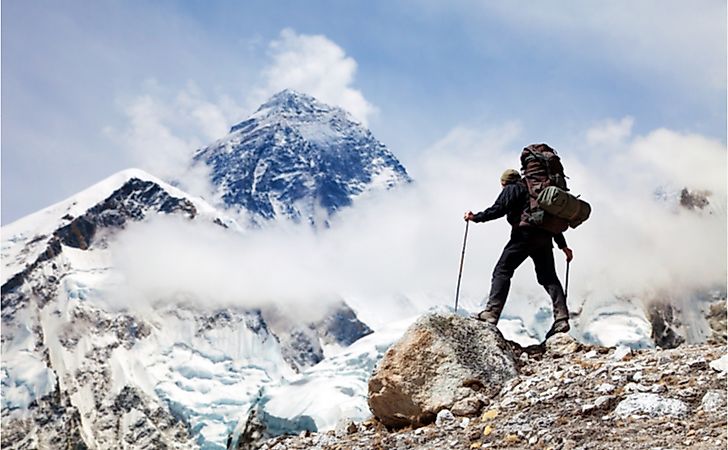What Is The Sagarmatha Mountain More Popularly Known As?

The Sagarmatha Mountain is more popularly known as Mount Everest. ”Sagarmatha” is a Nepalese word meaning "forehead in the sky." The Tibetans refer to the Sagarmatha Mountain as “Chomolungma” which means "Mother of the World." George Everest, a surveyor in India from 1830 to 1843, discovered the mountain in the year 1841. Mount Everest is estimated to be 60 million years old. Today, the exact location of Mount Everest is latitude 27°59’ North and longitude 86°55’ East.
Description Of Mount Everest
Mount Everest is the tallest mountain in the world. It stands at 8,848 meters above sea level. The height of the mountain is believed to be increasing by 4 mm annually. This increase is as a result of constant movement of underground rocks. Mount Everest is located in the Greater Himalayas. There are two routes to climb to the peak of the mountain: Nepal side (also known as the southeast ridge) and Tibet side (also referred to as the north ridge). The southeast ridge is considered the safest and most secure route compared to the north ridge.
Limitations Faced By Mountain Climbers
Many people look forward to climbing Mount Sagarmatha. However, the mountain poses several challenges to climbers like low oxygen levels, extreme cold, strong winds, and avalanches. The decreased oxygen availability results in suffocation and slows down brain coordination due to inadequate flow of blood to the brain. To protect themselves, the climbers carry oxygen tanks to supplement the oxygen in the air. Secondly, Mount Everest experiences temperatures well below sub-zero which makes it hard for someone to stay up in the mountain for more than 24 hours and makes them susceptible to hypothermia. Another challenge of climbing Mount Sagarmatha is the sudden avalanches which end up knocking off the climbers and burying them in the snow. Lastly, the harsh winds also make it difficult to climb the mountain. The winds calm down in May and for a short period in September making these two months the safest periods to climb Mount Everest. This safe period is known as the “Summit Window.”
Due to the challenges mentioned above, many people have died on the mountain. Most of the fatal cases occur in the regions higher than 7,500 meters above sea level resulting in it being called the “death zone.” Unfortunately, records indicate that one person dies every year due to snow blindness, suffocation, frostbite, starvation, and hypothermia on Mount Everest. Here is a list of the deadliest disasters on Mount Everest.











